AIR Spotlight: Victoria Manganiello
Victoria Manganiello is an artist, educator, designer, and producer. Since the time of her residency in the AIR 07 cohort at TAC, she has taught many workshops to current TAC residents ranging from spinning and weaving to grant writing. Through her teaching, she creates spaces of dialogue among the residents that are crucial to a greater understanding of the expansiveness and art of textiles as well as essential in creating an artist community to better navigate the art world by sharing experiences.
Ciara McNamara, Artist Programs intern at TAC, got together with Victoria Manganiello to speak more about her experience as an artist and collaborations with TAC:
Ciara: First I would like to ask about your beginnings as an artist. Did you start out as a textile artist and how did you discover your interest in textiles?
Victoria: It took me quite a while to adopt the word “artist", but I have always been making stuff. As a kid, I did a lot of knitting, macrame and I loved making clothes. I learned to knit from a community member and would knit things with pencils in math class. So textiles have always been a part of my personality - the things that I enjoyed doing alone and with other people. I have so many memories of sitting around in the grass with other kids making friendship bracelets; we would tie the end of the thread to our toes so that you could get tension. Funny how it took so many years later for me to learn about traditional weaving like the back-strap loom.
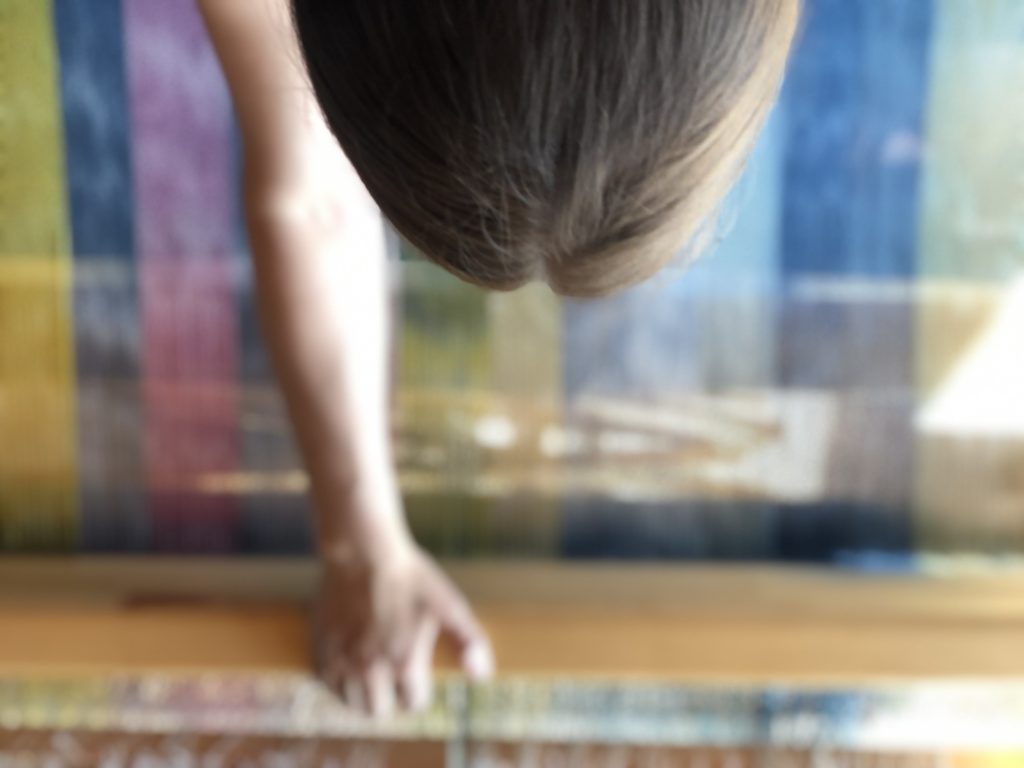
When I went to college, I did a double major in studio art and art history and that was really when I began to see that being an artist could be a real job. I was encouraged by my professors to refine my skills and consider the conceptual undertones to the objects that I was making. Fabric, yarn and other soft materials have always been a through line for me, even when my work has been focused in another medium like writing, book-making, film or social practice.
Ciara: I’ve been having conversations more recently as I've started personally exploring textile arts more regarding the categorization of defining textiles as craft versus art, depending on what form they take on. I’m curious what your opinion is on that statement?
Victoria: Yeah, I think that it's a complicated conversation and these designations like “art” and “craft” can really shift depending on the context. It has been my experience that in the art world, “craft”, is not necessarily a bad word, but it can bring certain associations for people. I noticed that when my career was beginning to pick up a little bit of momentum and galleries or dealers were selling my artwork, the designation “woven paintings” as opposed to “textile art” was always more fruitful in the market.
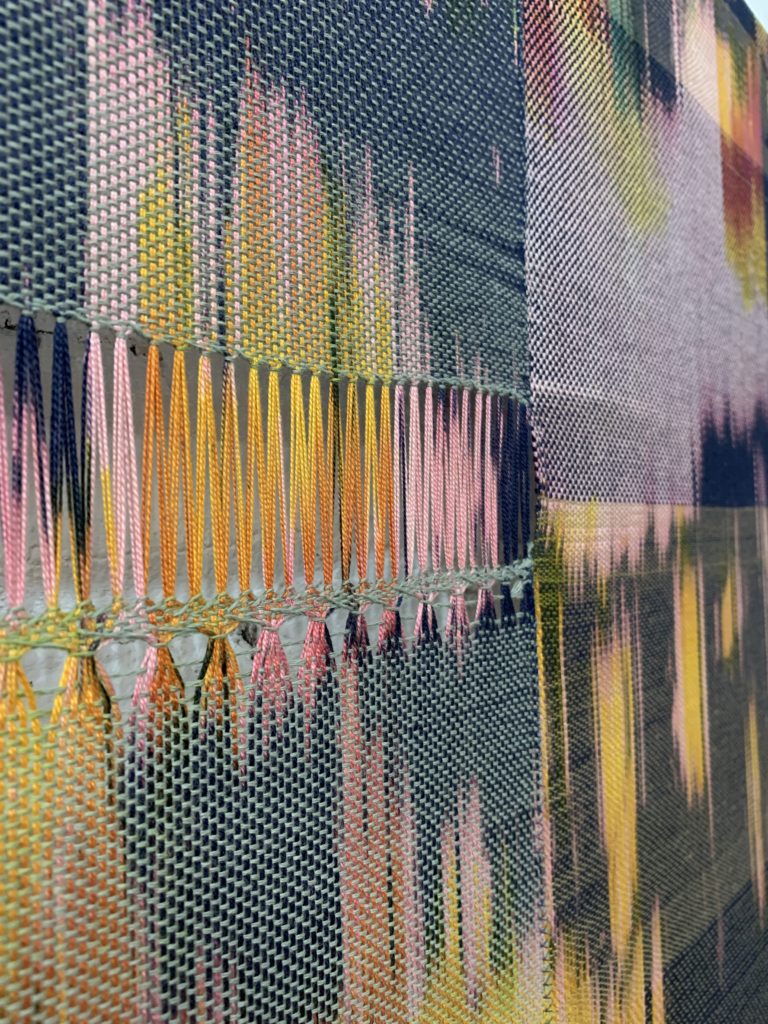
“Craft” or “textile” didn't seem to quite catch the attention of art world people in the same way that “painting” did. I love the history of craft and I am proud to be in the craft space but when being an artist is your job and selling work is a part of what helps you continue doing that, there's a strategy that you may decide to adopt along the way.
Nevertheless, the art world has certainly become more willing to embrace textile arts and I've kind of come into it at a great time for textile artists because of the many pioneers that have come before who have paved the path for craft in order for it to be taken seriously as art. Of course, you can find textile art at all the big museums and fairs.… although it still does seem to me that if there is a textile show that it's often in a smaller, less central gallery space; Or perhaps, focused on more old-fashioned ways of thinking about a textile.
Ciara: What is it about textiles that you are drawn to?
Victoria: A lot of working with textiles for me is intuitive. In other words, it's hard for me to eloquently describe an outward draw—I simply enjoy the tactility and motion of making textiles. I love all of the stories that we can tell with these materials and the visuals that abstract the textures, the colors, etc., but there's something very indescribable about the process that really draws me in. As a kid, I loved that making textiles was portable and social.
I also relish existing in the connection between the past and the future by utilizing such ubiquitous materials. I love that because we all have intimate connections with textiles, we can all understand them to a certain extent - this isn’t true for many mediums. And, of course, the connection to the history of women's work and storytelling is a big driver in my practice.
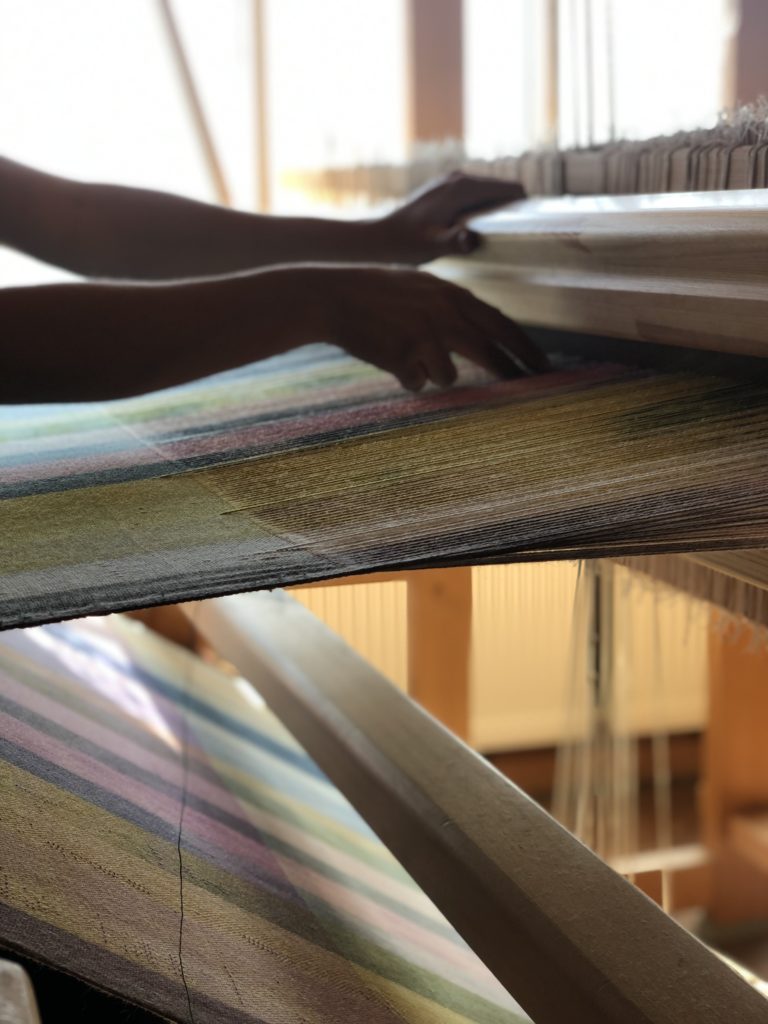
Ciara: You spin your own yarn, weave and dye for your “woven paintings”, sculptures, and other projects, and incorporate modern technologies into your work – what ideas or concepts are you playing around with that relate to these mediums?
Victoria: I wear three main hats as an arts-worker and artist; I co-run an art and design studio called, Craftwork [Link to Craftwork], I am an educator including at Parsons, NYU and community spaces like TAC, and I am an independent artist, sharing my own personal inquiry and practice.
In my woven paintings, I'm interested in combining highly manufactured or synthetic materials with those that are highly natural or handmade as an opportunity to explore the metaphors between what is natural and what is synthetic. Because of course, the synthetic materials in our lives don't come from elsewhere, they ultimately come from the earth with the natural ones. That is why I like thinking about the blend of natural and synthetic as a spectrum and exploring the grey area between extremes.
The woven structure - for me and so many others - has always been a really great opportunity to create a linear story because the process is inherently ordered: you have the first warp and then the second… and the third…. The weft is passed one-by-one…. and while you can manage the tension or play around with density or structure, there's always a kind of beginning and an ending point. That timeline can, when integrating these different natural-synthetic materials, be a way to explore the conceptual spectrums. And again, I really like telling that story.
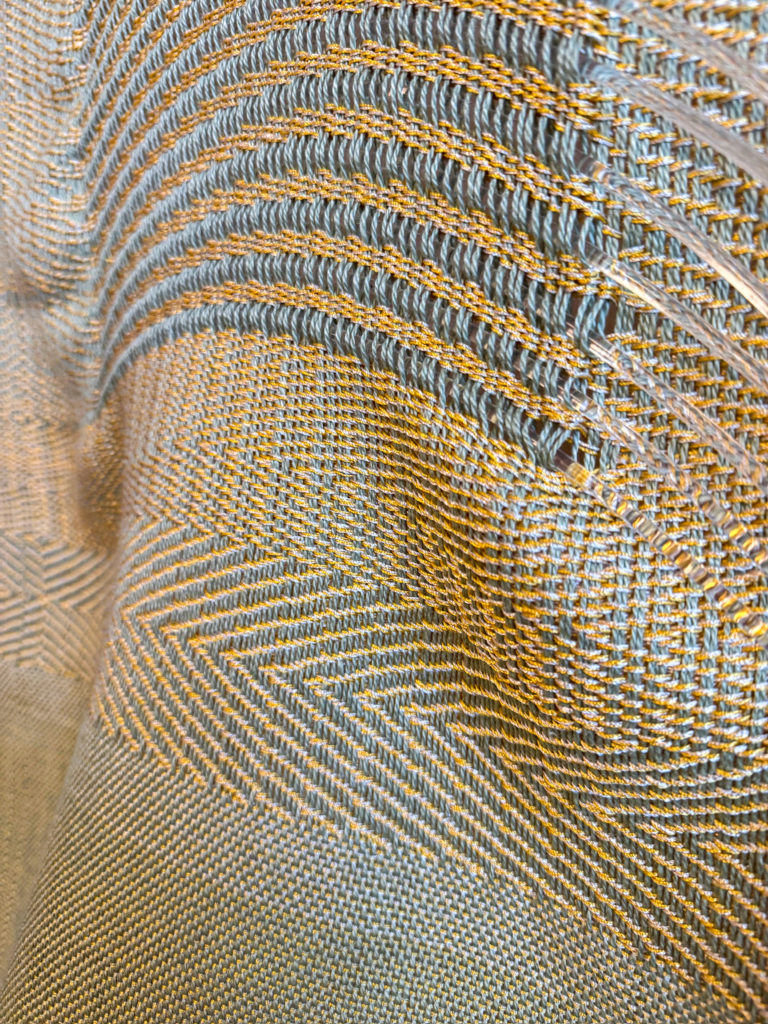
I can ruminate on the repetition of the intuitive process. I just love sitting at the spinning wheel, making yarn in the dye kitchen, and sitting at the loom, etc., it is all incredibly meditative. The conceptual stories behind my artworks often come afterward, after I’ve taken a step back to see what I’ve made, I can really reflect on what happened in the process.
Ciara: I am largely unfamiliar with electronic textiles. Could you talk to me about what they are, and your experience working in this area?
Victoria: I suppose I don’t have a prepared definition of what e-textiles are, but I think that's kind of the point. It's meant to be a “new” idea because it's something that people are playing around with “recently.” I think the community of e-textiles likes to keep their definition open. One type of definition could be that an electronic textile is a textile that has the capabilities of an electronic device.
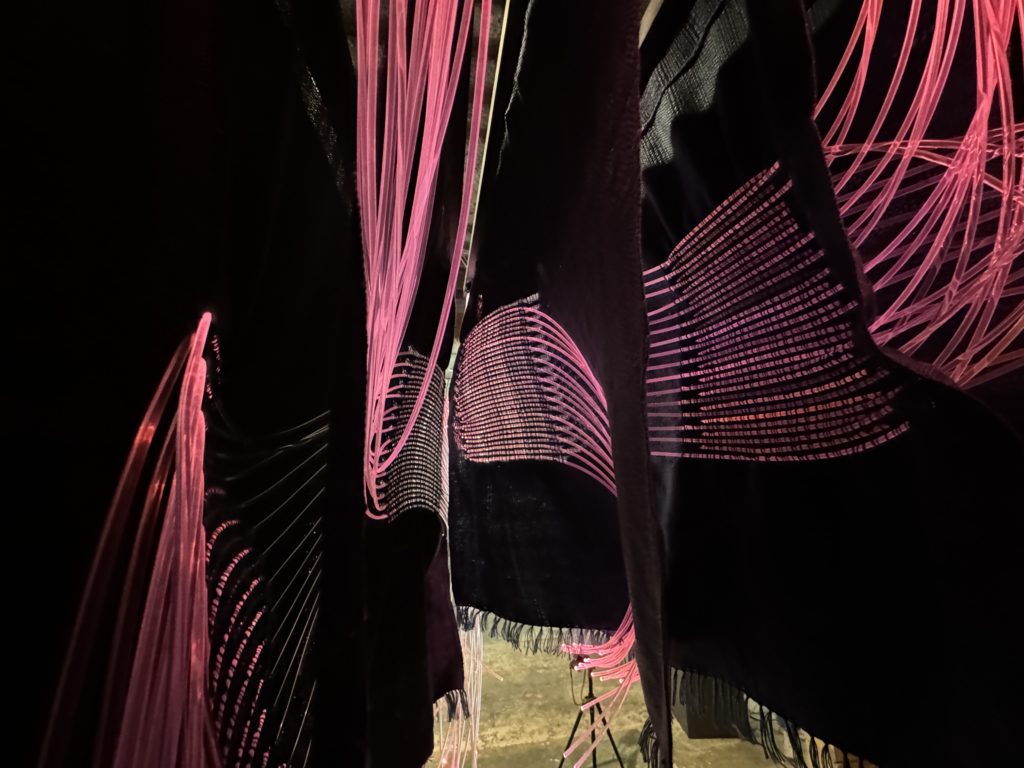
But because it's also a textile, that means it's pliable, it's soft, and maybe made from traditional textile techniques, pushing the boundaries of both electronics and textiles. Perhaps it’s not a traditional textile that's woven, knit, or felt, but it might be a bioplastic or a synthetic non-structured fabric that's made with soft or repurposed materials.
I found the e-textile community mostly through a curiosity and exploration of the relationship between textiles and technology. When I first learned that the Jacquard Loom, (the machine that changed textiles as an origin of fast-fashion, actually) was also the predecessor to the modern computer, I was incredibly inspired. Learning about that was really intriguing and exciting, and illuminated all the overlaps in our use of both textiles and technology.
I think most people are unaware that the first computer was a weaving loom, even though we all have these little looms in our pockets. It is just so cool. Of course, there was a ton of translation that happened between the loom and the phone in your pocket, but the fact that there is a direct lineage is so fascinating.
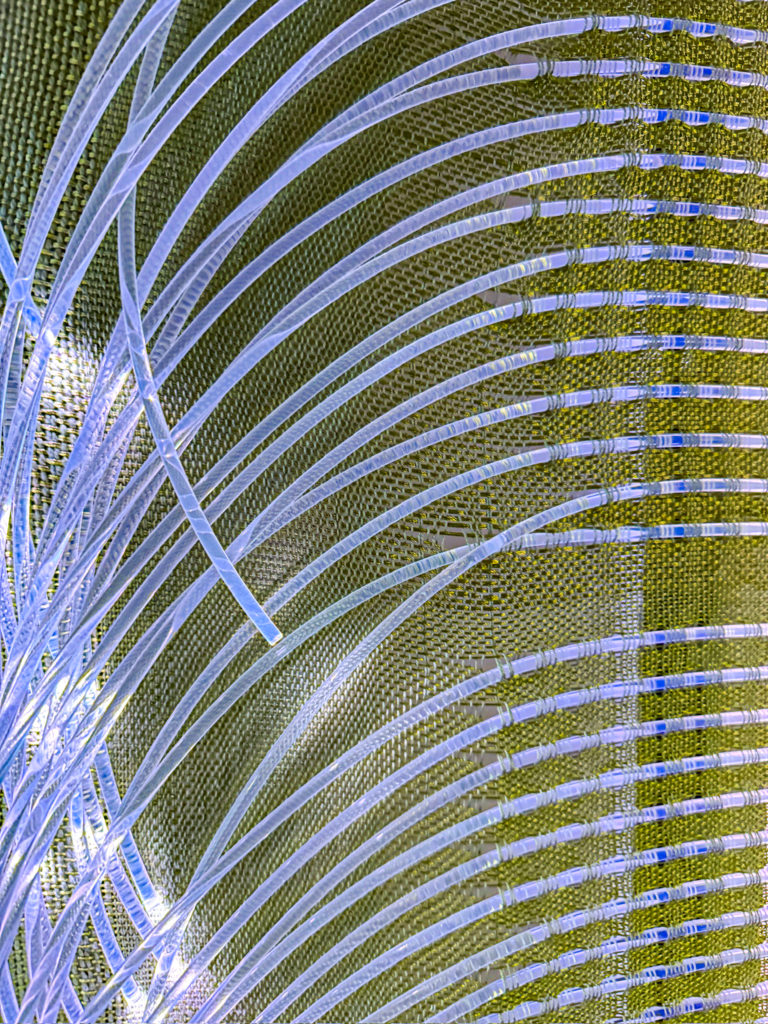
Conceptually, I started thinking about ways that I could make a soft computer as an opportunity to tell that story and so I found the e-textiles community. The work that I do at Craftwork, which is the collaborative practice of myself and another artist, Nicole Yi Messier, focuses on e-textiles. Nicole and I found each other in the e-textile community.
Nicole and I, together with a few other artists, run something called Electronic Textile Camp, which is an annual residency that's focused on the intersection of textiles and electronics [Link to Electronic Textile Camp]. It's a real joy of an experience because people come from all over and we just gather to make e-textiles for a week together.
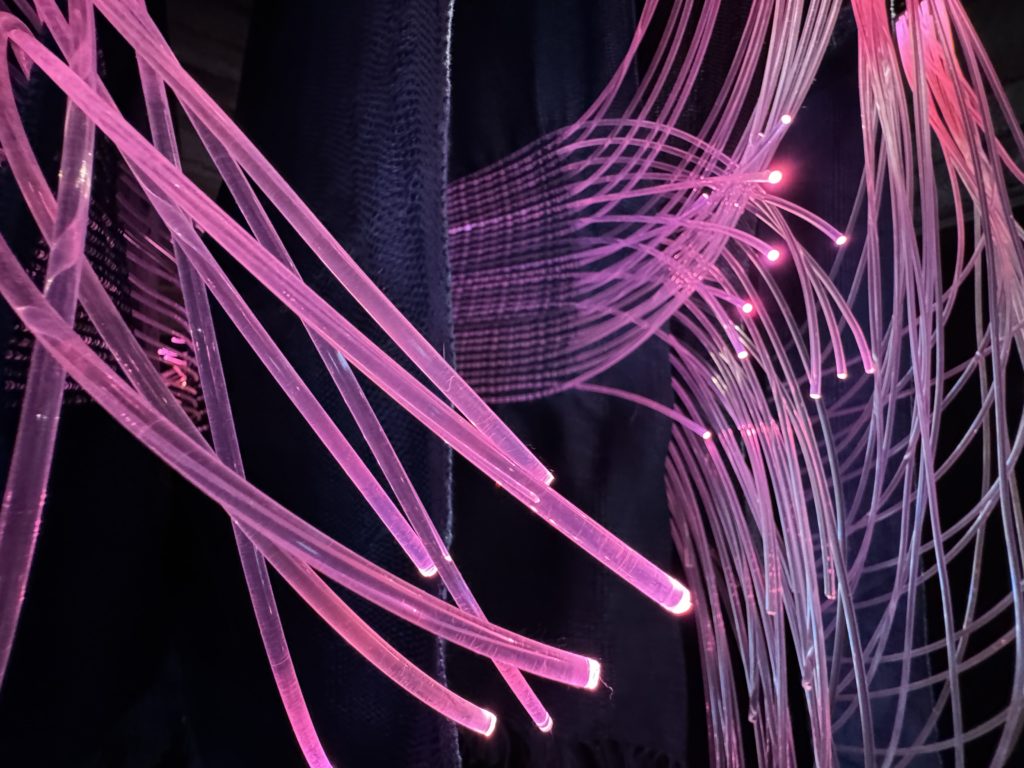
Ciara: Could you expand more on your design and art studio, Craftwork [Link to Craftwork]. How did Craftwork come to life and what projects are you currently working on?
Victoria: When I first met Nicole, we quickly bonded over a shared motivation to tell stories with objects. We just kept saying yes to each other’s ideas and eventually we decided to formalize our collaborative practice into a studio. We wanted to find a way for our creative practice to be our job and so we work with clients and on commissions but we also make our own projects.
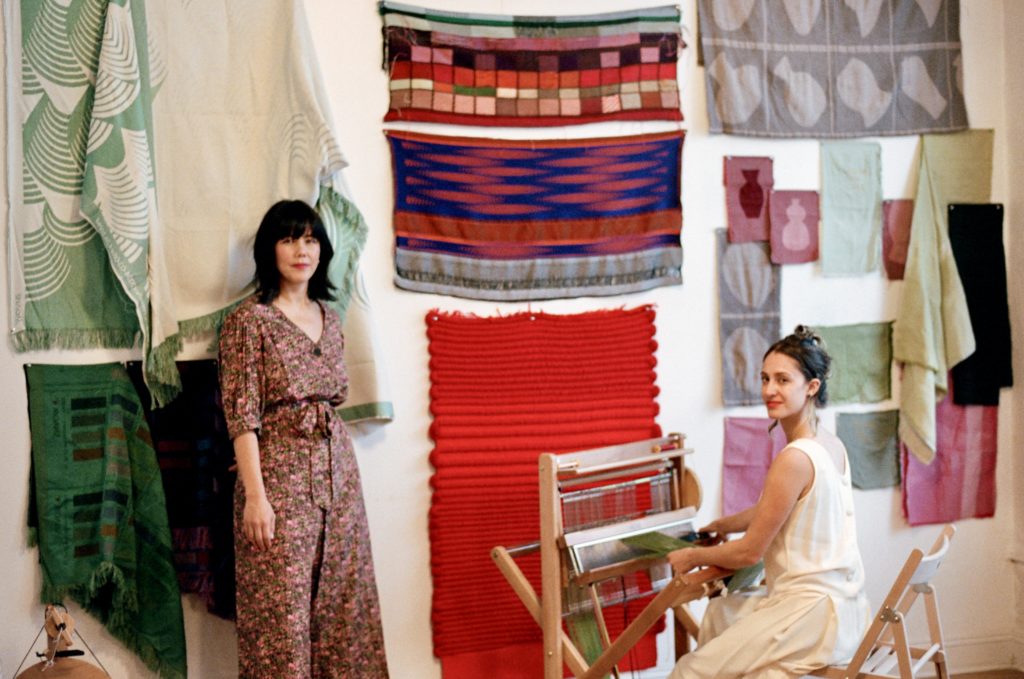
We often discuss the economics of being an artist and how it can be really challenging to describe your creative practice when so many artists actually do so much more than make their own art…they teach or freelance or work in a coffee shop or whatever it is. There's this myth about artists that we just figure it out (or have to struggle). So we wanted to create a studio that serves as the place where we can do - for our personal practices and for our commissioned work - all under one roof. A lot of artists use the same skills to make their art as they do to generate for their clients but we call that two different things.
Working together is empowering, because being an artist is often very isolating. You have to be your own small business, although we rarely speak about it like that. Artists have to be their own finance department, HR department, marketing department, etc. And then we have to actually make the art, source the materials, document the work, and be our own project managers. It's a ton of work and the fact that we can share that labor as one studio made of two brains, creates a much more manageable and fruitful working environment.
Ciara: That was very well-put, it is super important to recognize the type of work that artists put in operating as small businesses, most often by themselves. Next, I want to ask about the documentary you are working on, “The Domestic Machine,” I would really like to hear more about the film and interview process [Link to The Domestic Machine].
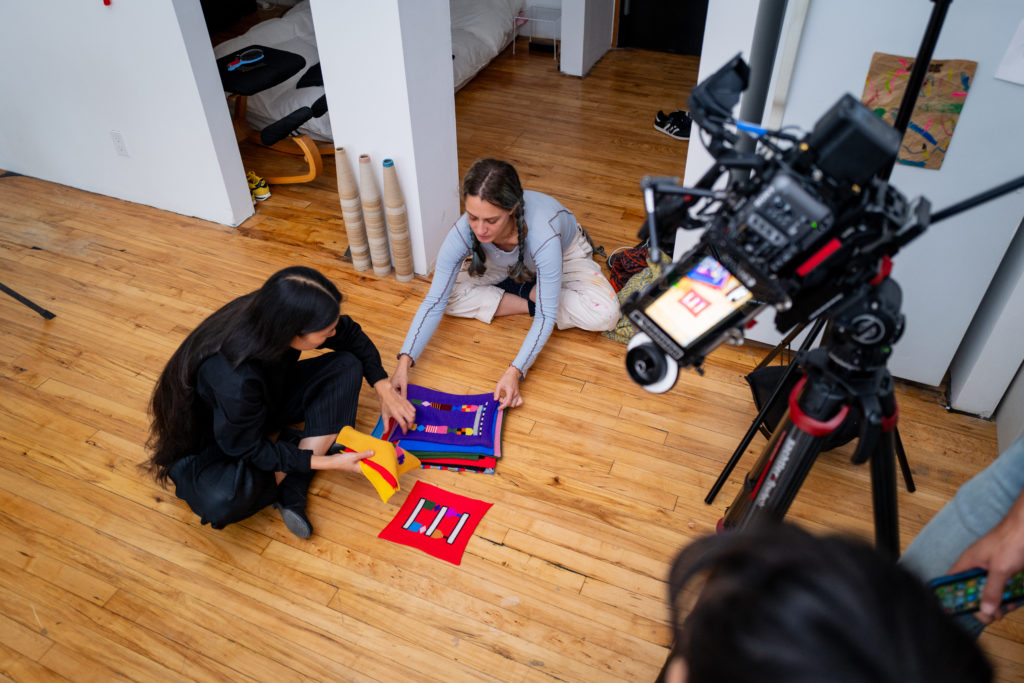
Victoria: Thanks for asking about it! The Domestic Machine is a project that we're really passionate about, and are aiming for it to be a feature-length documentary film. We started working on it around 2022 because we wanted to tell the story of the people who teach machine knitting on the Internet. Crafts people love the internet and occupy large areas of places like Youtube, Reddit, Instructables, etc. I think most of us learn on the internet, right? You need to know how to install your air conditioner or use an appliance, etc. The first stop is YouTube. And there you find some friendly person from “somewhere” who decided to make a video to explain that very specific thing to you for no promise of compensation or recognition. The machine knitting community online is pretty robust, especially considering that most of these knitting machines are out of production.

There is no obvious “official” place where one can go to learn to fix a knitting machine, for example, so that knowledge exchange happens online by independent knitters. There's a large community of people online who have decided to make videos for us to learn from. “The Domestic Machine” is focused on those people… three people who have had long careers and seen the rise and fall in popularity of knitting machines that create content for us. And, three other people in the younger generation who have been able to utilize such resources from that older generation, to keep the tradition alive. The film is about machine knitting and these six machine knitters, but it's also about the way that knowledge is exchanged on the internet in this modern era.
Historically, we would have had to be in proximity to each other to learn from one another, but because we have the internet now, people from very different walks of life, who look different, sound different, or are doing different things, can still have an opportunity to exchange information. Even better, it's an opportunity to develop a kinship that transcends all those other differences. So the film is about community just as much as it is about machine knitting.

We did a crowdfunding campaign and raised money from our communities that helped pay for the production; all the filming. We took a pause to raise additional money for the post-production, which is where we're at now, so a focusing on the editing, coloring, and sound.
Ciara: Pivoting into a different direction, what was your experience like as an artist-in-residence at the Textile Arts Center and why did you choose to pursue a residency here almost 10 years ago? [Victoria was in the AIR 07 cohort].
Victoria: I started my residency in 2014, I was AIR 07. I had a really great experience there. I applied for the residency a few years after I had finished my undergrad and I had been working at an arts company. I had a little floor loom in my apartment and was still making stuff but my full-time focus was, of course, this other job. When you graduate from an arts undergrad and you're figuring out what you are going to do with your life, it can be extremely confusing and challenging. That's part of why I applied to the Textile Arts Center residency.
It was the first time as an adult, post-graduation, that I was investing and focusing on my creative practice. By the end of my time there, I felt I could use the word “artist" with confidence. It had previously felt like too big of a word to adopt - that somehow I wasn’t eligible - but by the end of my time at TAC, I definitely felt that confidence. Isa Rodriguez was the AIR manager at the time, and she was so amazing. I remember her being very supportive in that particular evolution I was having with myself.
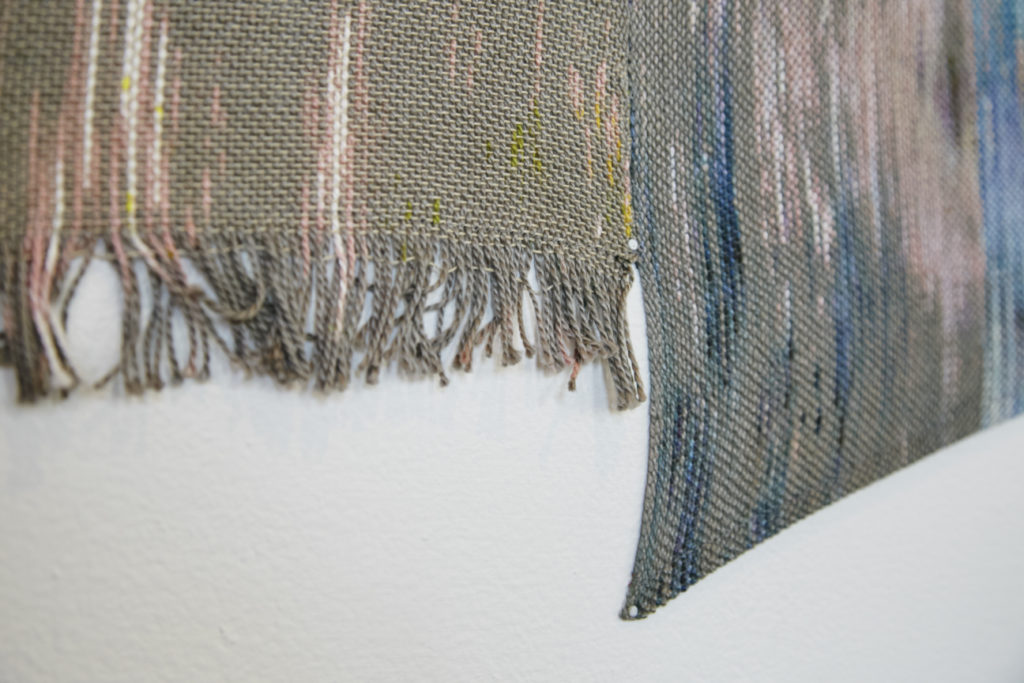
Ciara: After your residency finished, you started teaching a workshop class to AIR cohorts at TAC surrounding grant, fellowship, and residency writing. How did the workshop first come about? Why do you think it is important to teach a class like that to each cohort, and to artists more generally?
Victoria: When I finished my residency, I began teaching at the university level as well. I've now been teaching at the New School, at Parsons, and at NYU for nearly 10 years. I also began teaching at TAC right after my residency. I taught spinning and weaving classes, as well as facilitated some workshops that the AIR cohorts do during the Play period in their residency. Since then, I have also started doing a grant writing workshop for AIR. It is a really important conversation because of how confusing it can be to be an arts worker. Like I spoke about earlier, we are expected to hide the way we make money sometimes and it shouldn't be so tricky to find a way to survive as an artist. It is really important to have an open conversation instead. It can be very hard to find that information and I want to be a person who shares my knowledge and experience.
These industries are designed to keep us in competition with one another but that does not seem to uplift the working artist at all. I like the idea that I can pass along the knowledge that's been passed to me and hopefully create momentum to continue an open-source and community support mentality. So many corporations will support the arts but they don't necessarily support the arts workers. Try walking down the street and not encountering art, it's in every part of our lives. Everything includes art. It's so important. But for some reason, we take for granted how essential art is in our culture and in our society, and undervalue the labor that goes into it. I really believe we should all be paid for our work.
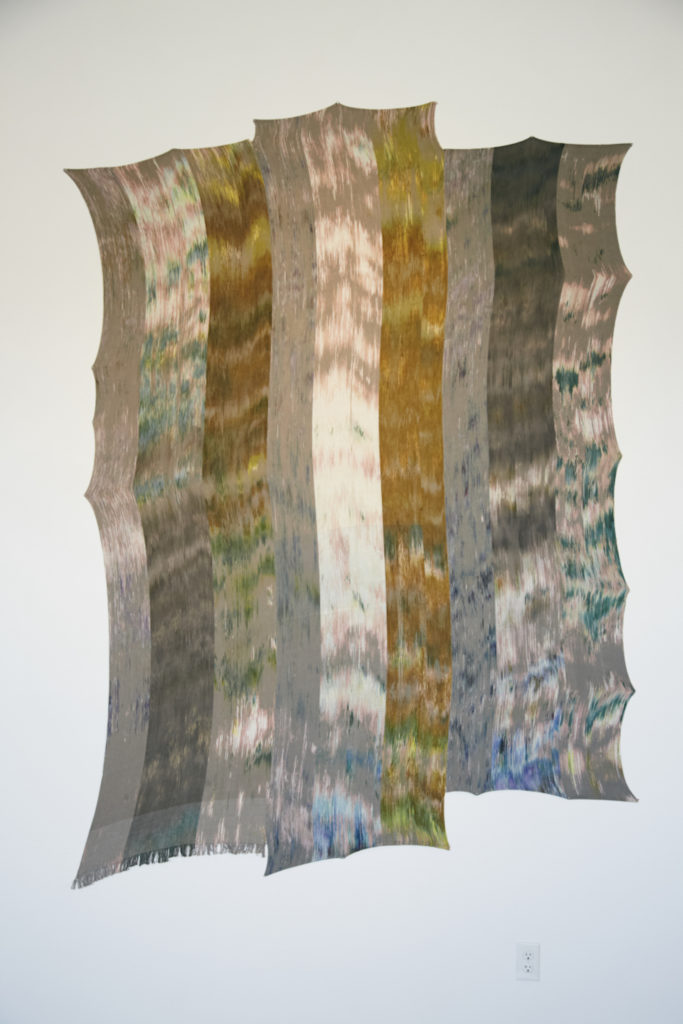
Ciara: Do you have any other upcoming projects or residencies you are excited about?
Victoria: Yes! Nicole Yi Messier and I have a collaborative Work-In-Progress residency as Craftwork, at TAC in October. [Link to WIP Residency Info] We also recently participated in an auction at Culture Hub on Tuesday, May 20th. [Link to Culture Hub Auction]. We also have a commission that's in Melbourne, Australia, at the National Communication Museum, called “Signal to Noise” [Link to Signal to Noise Info] that is up until September 11th. We also regularly do workshops and talks so follow along on socials for updates!
Ciara: So many exciting things! Well thanks for chatting with me today and I will definitely stay tuned for upcoming workshops and for your WIP residency at TAC coming up this October.
Victoria Manganiello is an artist, designer, educator and producer. She is a co-founder of Craftwork, co-organizer of electronic textile camp, and a part-time assistant professor of textiles at The New School/ Parsons and NYU. She is also a co-director of the upcoming documentary film, "The Domestic Machine."
Exploring the intersections between materiality, technology, geography, and storytelling, Victoria’s multi-disciplinary and installation work, abstract paintings, and kinetic sculptures are made meticulously with hand-woven textiles using hand-spun yarn and hand-mixed natural and synthetic color dyes alongside mechanical alternatives and modern technologies. Her books and films explore stories of women's work, labor and technology and craft histories and futures. She is well-known in the textile community as an accomplished weaver and innovative storyteller and facilitates many socially engaged projects in collaboration with other artists, designers, and educators.
About the AIR program:
TAC AIR combines studio access with a rigorous interdisciplinary curriculum, and regular critical dialogue, providing residents an opportunity to learn and explore the textile medium, and an alternative to traditional higher education programs. The residency culminates in a group exhibition produced and hosted by TAC. Since 2010, TAC AIR has graduated over 100 artists and designers whose work continues to further textile art within the fashion, fine arts, design and art education fields.